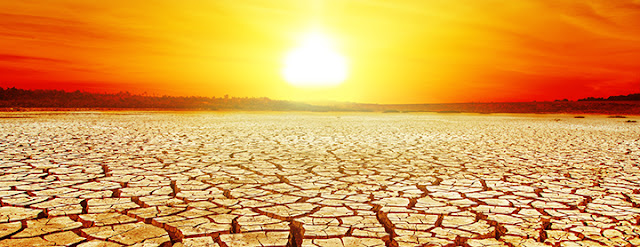Over a quarter of the world's land could become significantly drier if global warming reaches 2C - according to new research from an international team including the University of East Anglia.
 |
| Credit: UEA |
The findings, published today in Nature Climate Change, are the result of an international collaboration led by the Southern University of Science and Technology (SUSTech) in Shenzhen China and UEA.
Aridity is a measure of the dryness of the land surface, obtained from combining precipitation and evaporation. The research team studied projections from 27 global climate models to identify the areas of the world where aridity will substantially change when compared to the year-to-year variations they experience now, as global warming reaches 1.5C and 2C above pre-industrial levels.
Dr Chang-Eui Park from SusTech, one of the authors of the study, said: "Aridification is a serious threat because it can critically impact areas such as agriculture, water quality, and biodiversity. It can also lead to more droughts and wildfires - similar to those seen raging across California.
"Another way of thinking of the emergence of aridification is a shift to continuous moderate drought conditions, on top of which future year-to-year variability can cause more severe drought. For instance, in such a scenario 15 per cent of semi-arid regions would actually experience conditions similar to 'arid' climates today."
Dr Manoj Joshi from UEA's School of Environmental Sciences said: "Our research predicts that aridification would emerge over about 20-30 per cent of the world's land surface by the time the global mean temperature change reaches 2C. But two thirds of the affected regions could avoid significant aridification if warming is limited to 1.5C."
Dr Su-Jong Jeong from SusTech said: "The world has already warmed by 1C. But by reducing greenhouse gas emissions into the atmosphere in order to keep global warming under 1.5C or 2C could reduce the likelihood of significant aridification emerging in many parts of the world."
Drought severity has been increasing across the Mediterranean, southern Africa, and the eastern coast of Australia over the course of the 20th Century, while semi-arid areas of Mexico, Brazil, southern Africa and Australia have encountered desertification for some time as the world has warmed.
Prof Tim Osborn from UEA said: "The areas of the world which would most benefit from keeping warming below 1.5C are parts of South East Asia, Southern Europe, Southern Africa, Central America and Southern Australia - where more than 20 per cent of the world's population live today."
Source: University of East Anglia [January 01, 2018]
